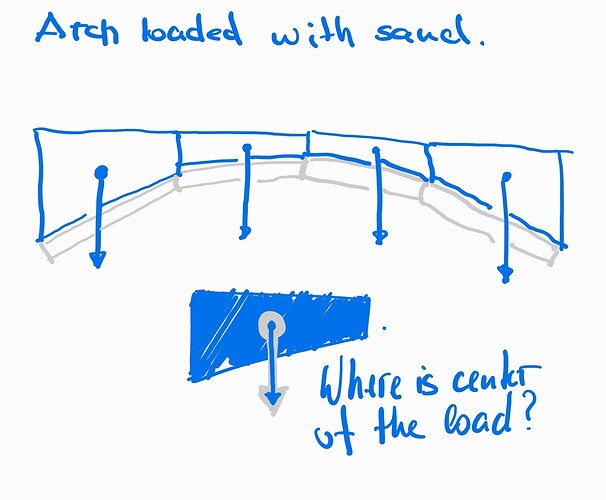Questions and discussion for this lecture live here. Fire away by hitting Reply below ![]()
Question 1:
When there is a moment in the reaction, how does the support looks like in reality? How they are fabricated to resist moments in steel, concrete and timber structures?
Are they steel plates welded or bolted to the ground? If yes, then how to know the size of a plate?
Question 2:
When you have irregular load area how mathematically do you derive a center of it?
In the image I have an arch that is loaded by sand. I assume there are many other polygonal shapes of the loading the scenarios not only triangular or trapezoidal shapes. Is there a uniform method to get a center of mass?
-
Connection design is not really within the scope of this course. The construction details will differ based on the construction material, steel for example will likely make use of additional stiffening plates at the column to baseplate connection. For concrete structures, the internal steel reinforcement will be influenced. Timber will have it’s own details. In all cases the concrete foundation will also need to be designed to allow sufficient moment capacity to be developed. I recommend seeking out to specialist material specific design texts for more details on this.
-
For your specific case, the easiest approach is to divide each polygon shape into a rectangle and triangle - then you can determine the resultant force and its location for each ‘sub-shape’ and apply the equivalent load to the structure.
Seán
Thank you for an answer.
